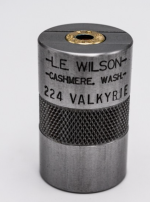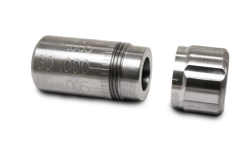Hello!
I'm fairly new to reloading as I am just starting with PRS over this past summer.
I've noticed a few times that I have trouble chambering brass that I reload, and have narrowed this issue down to brass that was once fired from a different rifle.
A coworker recently gave me a bunch of SRP brass that has these strange lines on the shoulder - He fired them out of his mossberg patriot. I tried sizing one and chambering it in my rifle (savage axis precision) and it will not chamber. In fact, it locks the bolt up pretty bad, resulting in the need to smack it open with a mallet.
The brass hangs up on the midsection i believe, as is evident from the scratches on the case.
IF this sounds like a logical explanation, are there any sets of dies I can buy that will resolve this issue and squish the sides closer to the base back to factory? I am currently using Hornady Custome Grade dies on a lyman american 8 press.
Thanks!

I'm fairly new to reloading as I am just starting with PRS over this past summer.
I've noticed a few times that I have trouble chambering brass that I reload, and have narrowed this issue down to brass that was once fired from a different rifle.
A coworker recently gave me a bunch of SRP brass that has these strange lines on the shoulder - He fired them out of his mossberg patriot. I tried sizing one and chambering it in my rifle (savage axis precision) and it will not chamber. In fact, it locks the bolt up pretty bad, resulting in the need to smack it open with a mallet.
The brass hangs up on the midsection i believe, as is evident from the scratches on the case.
IF this sounds like a logical explanation, are there any sets of dies I can buy that will resolve this issue and squish the sides closer to the base back to factory? I am currently using Hornady Custome Grade dies on a lyman american 8 press.
Thanks!



